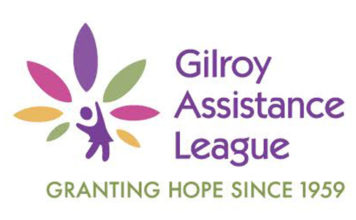Caltrain might cancel service to South County because of budget
cuts and decreased ridership, according to budget projections
shared at an citizen advisory board meeting last week.
Caltrain might cancel service to South County because of budget cuts and decreased ridership, according to budget projections shared at an citizen advisory board meeting last week.
The news follows a study that indicates ridership along the “Gilroy extension” – which runs from Gilroy to the Capitol station in San Jose – has dropped 27.6 percent since 2006. Councilwoman Cat Tucker, who attended the advisory board meeting Wednesday, is encouraging fellow council members to do what they can to keep service alive in Gilroy.
“To completely eliminate a city I think is absolutely the wrong thing to do,” Tucker said.
If approved by the Caltrain board of directors, service would be eliminated at the Gilroy, San Martin and Morgan Hill stations as well as the Blossom Hill and Capitol stations in San Jose, spokeswoman Christine Dunn said.
Discussion of eliminating service to Gilroy comes as Caltrain faces a $12.5 million deficit for next fiscal year.
Although Caltrain obtained $18.7 million from state, federal and other miscellaneous sources to reduce its deficit, operating contributions from transportation agencies in San Francisco, Santa Clara and San Mateo counties are expected to drop by nearly $14 million.
Declining ridership also poses a problem for Caltrain. Overall ridership dropped for the first time this past year, plummeting from 39,122 riders in 2009 to 36,778 in 2010. Total ridership along the Gilroy extension declined by 81 riders during that time period.
The Gilroy station’s ridership alone dropped by 23.7 percent during that time period from 156 to 119 daily riders, and Morgan Hill’s ridership dropped by 14.5 percent from 123 to 105 daily riders, according to a Caltrain count in February. San Martin’s ridership remained steady at 45 riders per day.
Still, some stations saw a far larger decline than those in South County. For instance, College Park station in north San Jose lost almost half of its ridership this past year.
Caltrain also might cut costs by eliminating midday, weekend and holiday service as well as late-night and early morning services, Dunn said. Those proposed reductions would impact 5,700 midday riders, 2,000 night riders, and 18,000 weekend riders, Caltrain officials estimated last month.
In addition, Caltrain is considering doing away with staffed ticket offices in San Francisco and San Jose.
“Pretty much everything is on the table,” Dunn said.
Caltrain will discuss cost-saving measures during its June 3 board meeting, she said.
In an e-mail, Tucker called on her colleagues to “pressure” Caltrain to not cancel service to Gilroy, where service was extended in 1992 thanks to a concerted effort by South County residents.
“As you can imagine once the trains stop coming they won’t be easily started again,” Tucker wrote.
Councilman Peter Arellano shared Tucker’s concerns on Monday.
“I think it’s short-sighted on their part and it’s going to be hard to get the ridership back,” he said.
However, at least one local resident indicated he has no interest in continuing rail service in Gilroy. Local attorney Joe Thompson sent a letter to the City Council on Monday that opposed subsidies for Caltrain service.
Thompson, who generally opposes public transportation projects, stated in the letter that he often noticed fewer than five passengers aboard Caltrain on winter evenings.
“When our brilliant leaders in South County lobbied for ‘Caltrain extension’ to Gilroy, I got together with a local (accountant) and found that you could hire limousines, transport six passengers per limo, and give free drinks and a $10 tip to the limo driver, for travel between Gilroy and San Jose, for less than we pay for Caltrain service,” Thompson wrote.
However, Councilman Perry Woodward, who sits on the board of the Santa Clara Valley Transportation Authority, expected ridership to pick up once the economy improves. He expressed doubt that the Caltrain board would actually do away with service to the Gilroy extension, proposing that individual cities that benefit from Caltrain pitch in to help keep the services alive if needed.
“The reality is the that studies all show that Highway 101 is going to be gridlocked in 20 years,” Woodward said. “We ought to be boosting the availability of transit, whether it’s public transit or private transit.”














